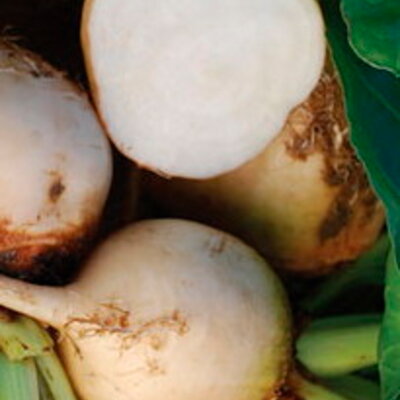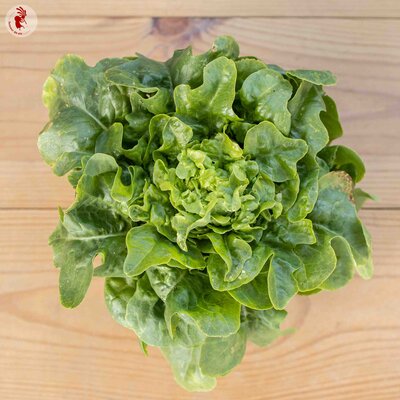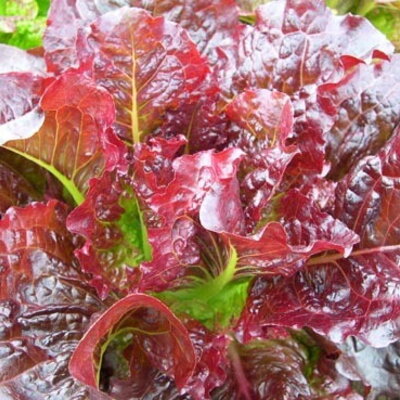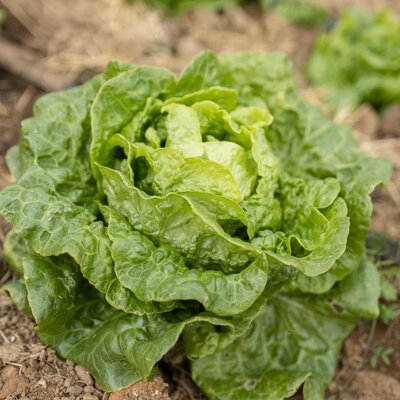
Albino - White Beet
This ancient variety produces delicate, delicious, vitamin-rich foliage. Its round roots with thick, white flesh offer a mild, very sweet flavor. They can be used to make sugar.
Characteristics of Albino white beet
White Albino beet, Beta vulgaris, is an early root vegetable variety native to Holland. It takes the form of a round root 15 to 20 cm in diameter. Highly appreciated for its mild, sweet flavor, its thick, white flesh can be cooked or raw, in salads or soups. You can also eat its wavy leaves, an excellent source of minerals and trace elements.
How to sow Albino white beet seeds?
White beet is sown from March to May in pots, and from April to July in the ground. This vegetable plant is biennial: it only produces the following year, and requires a long period of cold weather to go to seed.
To sow in a bucket, bury the seeds 0.5-1 cm deep in potting soil, then water abundantly. Germination takes 5 to 10 days, depending on temperature (12°C to 26°C). Transplant when plants have developed 5-6 leaves, after the first frosts, 20 cm apart in all directions.
If sowing is possible in a bucket, it's best to sow Albino White Beet directly in the garden. Although it thrives in sunny spots, it's best to plant it in rich, cool soil, as, like all root vegetables, it's sensitive to drought. We therefore recommend regular watering and mulching to conserve moisture, in soil enriched with mature compost. Maintain a distance of 20 cm between seeds, thinning out to encourage the growth of the most vigorous plants.
What companion plants should I grow with white beet?
Albino white beet is a disease-resistant variety. However, mildew and rust can affect it at the end of the season.
Beets are best grown with companion plants: cauliflower, onion, lettuce and other leafy vegetables...
How to store white beet?
White beets are harvested from July until the first frosts. Roots intended for preservation should be dried for a few days, stripped of their tops, wiped dry and stored in a cool, dark place, such as a cellar. Burying them in a silo filled with sand or straw preserves them throughout the winter. Alternatively, beets can be cut up and stored raw in dry sterilized jars, or cooked and frozen.
How to cook white beet
Like the pink and white Chioggia beet, this variety can be eaten raw or cooked. It can be used in a wide range of recipes: in soups, creams, gratins, vegetable chips or salads; grated or in carpaccio.
Before preparation, beet must be freed from soil and gently washed. Beetroot can be boiled, steamed, stewed or baked whole, with the skin on. For easy peeling, plunge the root into cold water after cooking. The tops can be eaten raw, in salads, or cooked like spinach.
Red, purple, orange and yellow beets are also available.
What are the benefits of beet?
Beets are excellent vegetables, rich in minerals and vitamins A, B1, B2, B6 and C. The root provides many interesting substances: choline, folate, iodine, manganese, sodium, potassium, fiber and carbohydrates. In addition to its antioxidant power, beet facilitates blood regeneration, making it an excellent choice for haemorrhage, convalescence or preparation for childbirth. The leaves contain as much, if not more, iron than spinach.
These products may also be of interest to you
in the ground, online
Sow in pots. Transplant at least 20 cm apart in all directions, when plants have 5 to 6 leaves and soil is sufficiently warm. Sow directly in place, in rows 20 to 30 cm apart. As soon as plants have 3 to 4 leaves, thin to 15 or 20 cm along the line, keeping the most vigorous. Overgrown plants can be transplanted.
Sow every 2 to 3 weeks to stagger harvesting, and water regularly.
February, March
April, May, June
June, July, August, September, October, November
in the ground
sunny, semi-shade
medium
all floor types
drained, light, fees
Beta vulgaris
early
From 80 to 500 g
6 grams
round
tender
White
From 40 to 60 cm
From 15 to 20 cm
corrugated
Hollande
Inconnue
This old variety was developed in Holland.
As well as being excellent vegetables, beets are rich in vitamins A, B1, B2, B6 and C, and their leaves, which are also an excellent source of many minerals and trace elements (calcium, magnesium, copper, phosphorus, sodium, iron, etc.), contain as much, if not more, iron.The root contains fewer minerals than the leaves, but provides a long list of interesting substances: choline, folate, iodine, manganese, sodium, potassium, fibre, as well as carbohydrates in an easily digestible form. And although its iron content is not very high, it is of excellent quality, making beet an interesting food to help blood synthesis. Particularly recommended in cases of haemorrhage, in preparation for childbirth or during convalescence...











